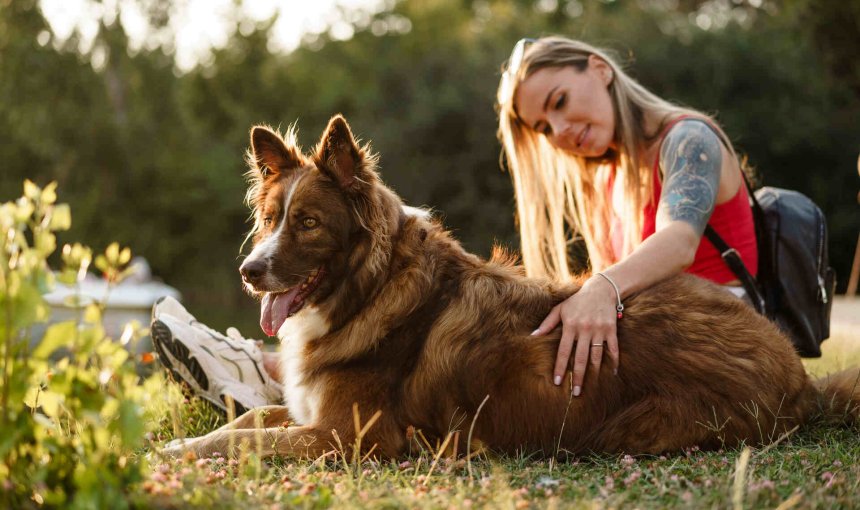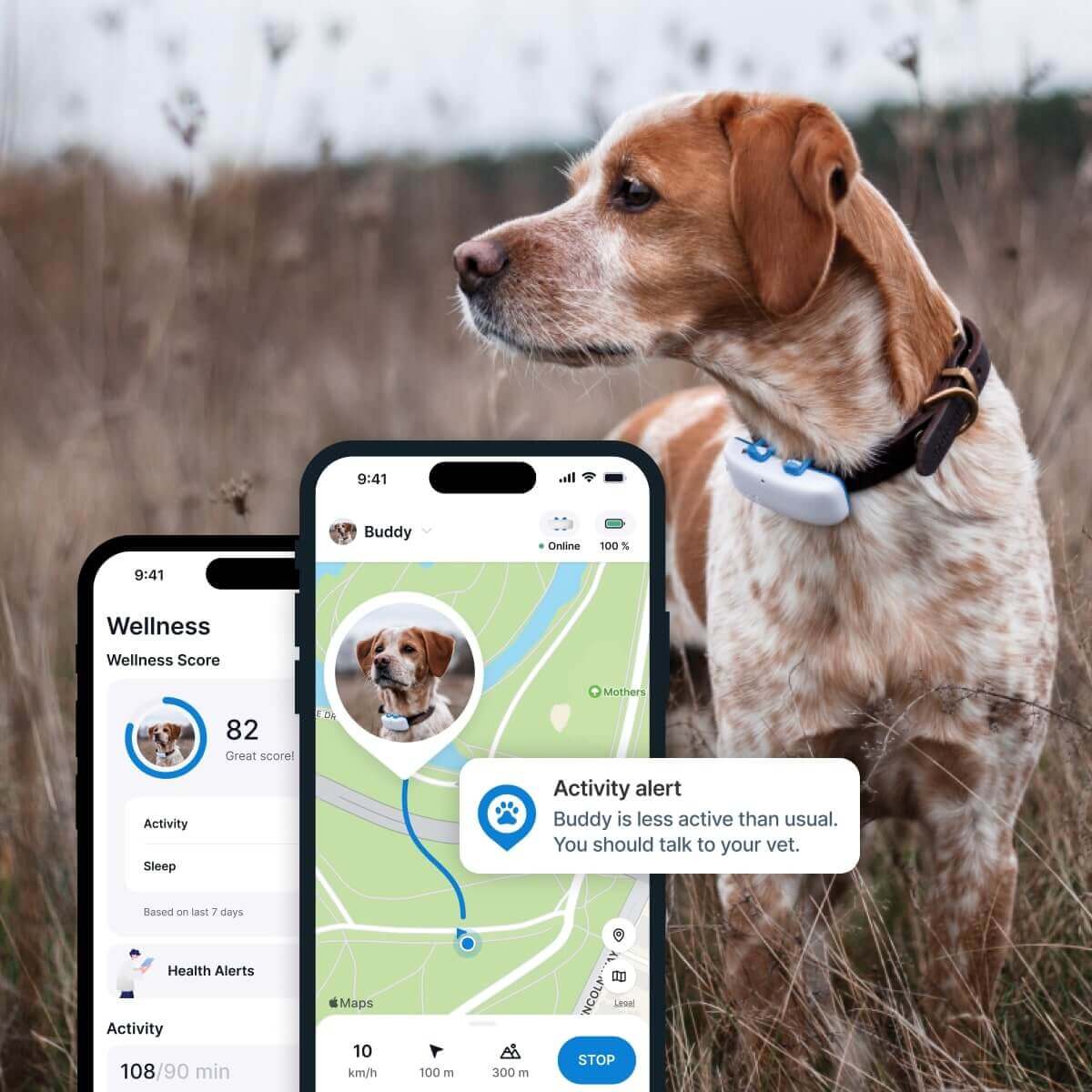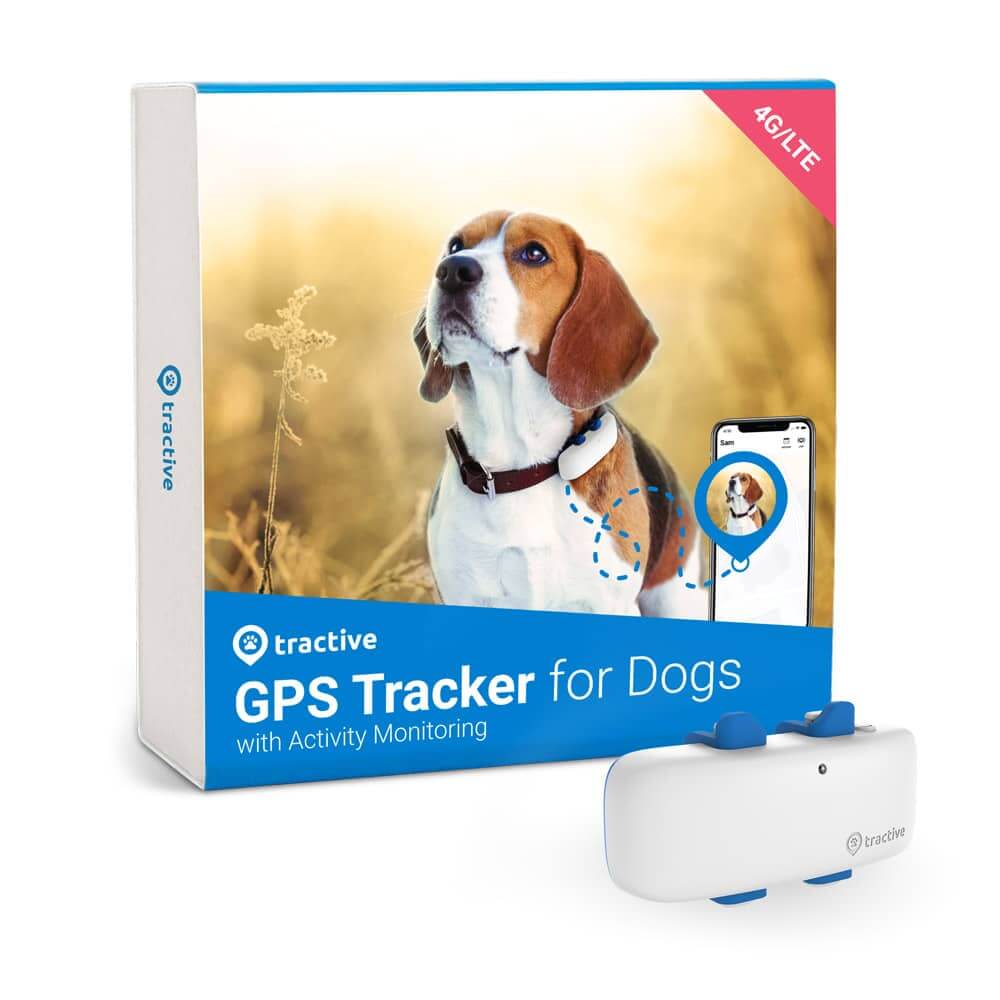Pyometra in Dogs: Warning Signs & How To Catch It Early
Learn the signs of this harmful health condition before it has a chance to worsen - and help your dog live their best, healthiest life by your side.

If you’ve got an intact girl dog at home, you’re likely keeping her away from boy dogs – especially when she’s in heat. But as it turns out, a dog that can get pregnant can still be at risk for harmful health conditions if they don’t conceive. Like, for example, pyometra in dogs – which is a potentially life-threatening condition if you don’t catch it on time.
But on the bright side, early detection can make a world of difference. So let’s break down what pyometra is, what red flags to watch out for, and how you can catch on to the signs – like a drop in your dog’s activity – much in advance.

Find out how your dog spends their time.
Read moreWhat is pyometra in dogs?
Pyometra is a severe infection of the uterus, which tends to affect unspayed female dogs. It often occurs as a result of hormonal changes following a heat cycle. Basically, if your dog’s body prepares for pregnancy but doesn’t conceive, the hormonal environment can make her vulnerable to bacterial infection. (Like E.coli.)
Read more: Everything You Need To Know About A Dog In Heat
How does pyometra develop?
When your dog is in heat, her cervix opens and relaxes – leading the way to her uterus. If she’s ready to conceive, her uterine wall will have thickened or grown cystic. (All conditions that make it easier for bacteria to grow.)
During this time, the bacteria that are naturally present in your dog’s vagina can end up passing into and multiplying in her uterus. With time, this can lead to a pus-filled and inflamed condition known as pyometra.
In other cases, if your dog’s uterine muscles can’t contract properly, this can make it difficult to get rid of the bacteria. (Like from a thickening of the uterine wall or if your dog’s body is creating the hormone progesterone.)

The main types of pyometra in dogs
There are two main types of pyometra: open and closed.
- In an open pyometra, the cervix remains open, allowing pus to drain out.
- In closed pyometra, the cervix stays closed, trapping pus inside. Closed pyometra is especially dangerous because the infection is trapped and can spread quickly to the bloodstream, causing sepsis.
- In some cases, a dog may even develop a condition called stump pyometra. This is when they might have been spayed, i.e. their ovaries were removed – but some ovarian tissue might remain, which can get infected.
Girl dogs of any age are vulnerable to pyometra. However, it does tend to be more common among adult and older dogs that have been through heat cycles several times already. The disease can occur around 2-8 weeks since your dog’s last heat cycle.
How spaying can prevent pyometra
One of the most effective ways to prevent pyometra is by spaying your dog. Spaying involves surgically removing the ovaries and uterus. This not only prevents pregnancy but also eliminates the risk of pyometra entirely. Since pyometra is often caused by hormonal changes following a heat cycle, removing these reproductive organs means your dog won’t experience those hormonal fluctuations or be vulnerable to the infection.
Spaying your dog also comes with other health benefits. Like, for example reducing the risk of mammary tumors and eliminating the risk of ovarian cancer. It’s a preventive measure that can save your dog from undergoing emergency surgery and other complications down the road. If your dog is healthy and you don’t plan on breeding, consider talking to your vet about the right time to have her spayed to keep her safe and healthy.
Read more: Spaying in Dogs: What Every Pet Parent Should Know
Early signs of pyometra in dogs
- Vaginal discharge
If you notice a cream-colored or bloody discharge – or even pus – especially after your dog’s heat cycle, this is a red flag. It may be a sign of open pyometra. - Increased thirst and urination
If your dog is peeing more than usual and/or drinking water like crazy, watch out. It’s usually one of the first signs something isn’t right with them health-wise. - Loss of appetite
- Pale gums
- Vomiting and fever
- Distended or enlarged belly
Usually as a result of discharge buildup in your dog’s uterus. - Lethargy, weakness, or collapse
A drop in your dog’s energy and enthusiasm for walks or play could be a sign that something’s wrong.
💡 An Activity Tracker for dogs can help you catch on to a change in your dog’s everyday activity – much before their health worsens due to lethargy and these more obvious symptoms arise. We’ll cover it in detail a little further below.
What to expect at your vet
If your vet suspects pyometra, they will likely conduct an ultrasound or X-ray to confirm the diagnosis. Blood tests and urine samples can help them check for signs of infection or organ impact.
Once they confirm it’s a case of pyometra, your vet might recommend surgery as the next step. This is essentially an emergency spay, where the infected uterus and ovaries are removed.
Prompt treatment is key here because pyometra can quickly turn deadly if left untreated, especially in the case of closed pyometra. Your vet may also administer IV fluids and antibiotics to help stabilize your dog before or after surgery.
For dogs who are too ill for immediate surgery, intensive care might be required to stabilize them before proceeding. Which is why it’s always a good idea to consider getting your dog spayed when they’re healthy – not as an emergency.
It’s a scary situation for any dog parent, but here’s the good news: many dogs make a full recovery with early intervention. What’s important is to catch on to the warning signs before they have a chance to worsen.
Where an Activity Tracker can step in
Pyometra can sneak up on you, seemingly out of nowhere. But thankfully, there are ways to catch it early. Like, for example, with a dog Activity Tracker which helps you monitor your dog’s activity levels over the long-term. It’s like having an extra set of eyes on your dog’s well-being — because sometimes changes in behavior, like reduced playtime or increased sleep, are the first indicators that your dog isn’t feeling well.
So if you notice a significant drop in your dog’s usual activity or increased lethargy, it might be a hint that something’s up. Even better, your trusty Tractive device alerts you much in advance:

💡 So you can head to your vet – with actionable data at hand – much before your dog’s health has a chance to worsen.
Learn the signs & get your dog the care they need early on
Here are the key takeaways to remember about pyometra in dogs:
- It’s a serious uterine infection that can be life-threatening if not caught early, especially in unspayed female dogs.
- Watch for early signs such as unusual vaginal discharge, increased thirst and urination, loss of appetite, pale gums, vomiting, fever, enlarged belly, and lethargy.
- Quick action is crucial. If you notice any of these signs, get in touch with your vet right away. Pyometra often requires emergency surgery for successful treatment.
- An Activity Tracker can help you catch on to changes in your dog’s activity levels. It’s an important early warning tool that something might be wrong, meaning you can head to the vet for a checkup that much quicker

“Absolutely love this tracker…it gives great insights on (our dogs’) activity and sleep levels.
I’m comforted knowing that if they started acting strangely or the data shifted drastically that we could take them to vet potentially before we would notice something wrong.
Can’t recommend this tracker enough!“
– Eva, US (Source: Trustpilot)

Stay on top of your dog’s wellness
See how they’re doing at a glance with Wellness Score. Set goals. Compare with dogs like yours. Monitor sleep. Detect issues and keep them healthy.
Here’s Dr. Dan the Veterarian wrapping up with a 5-minute explanation of pyometra in dogs and what signs to watch out for:
And if you’ve liked this post, share it with a friend or a loved one – and let’s help build a safer, kinder world for our furry friends together.




